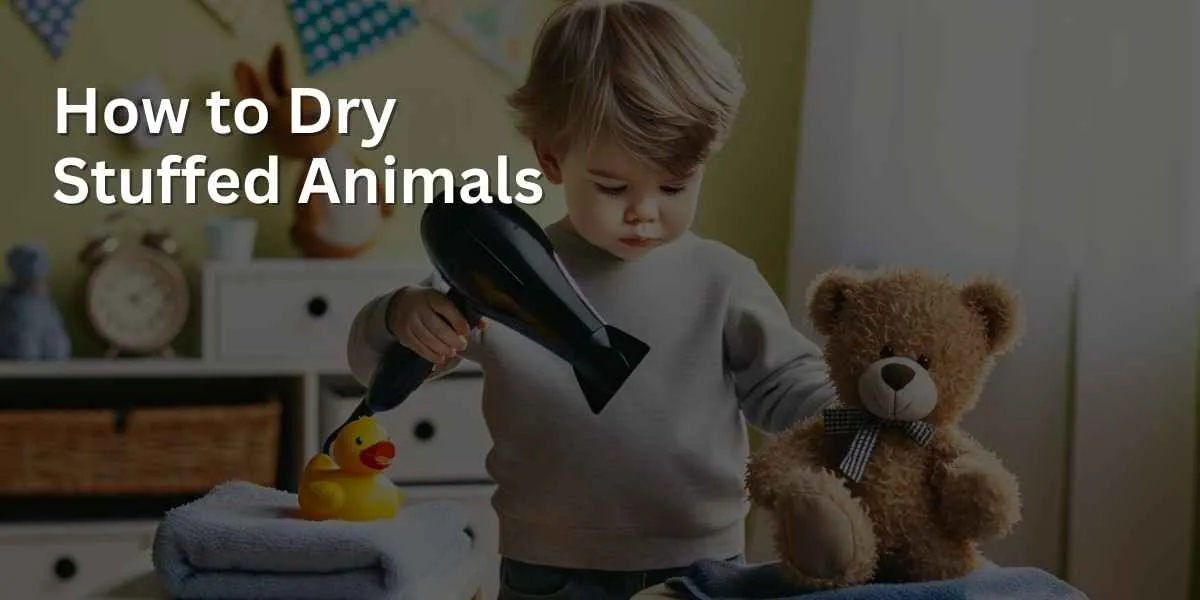How to Dry Stuffed Animals? Embark on a journey to ensure your plush pals are safely and effectively dried.
Stuffed animals, cherished companions of many, occasionally need a wash. But post-cleansing, how do you ensure they dry without losing their softness or shape? For those aiming to maintain the integrity of their plush toys, navigating the drying process is paramount.
From air-drying techniques, to using a dryer with caution, and even the art of reshaping, I’ve curated steps to make certain your stuffed animals retain their original charm after a wash.
Venture with me through this plush-care guide, and let’s work together to keep your furry friends fluffy, intact, and ready for more cuddles.
Key Takeaways on Drying After Washing Stuffed Animals
- Air Drying:
- Preferred Method: Air drying is the gentlest method and is recommended for most stuffed animals.
- Proper Positioning: Lay the stuffed animal flat on a clean towel, reshaping it as needed. Turn it over periodically to ensure even drying. Alternatively, hang it by the ears or clothespins attached to the feet or hands.
- Hair Dryer:
- Gentle Heat: Using a hair dryer on a cool or low heat setting can speed up the drying process. Hold the dryer at least 6 inches away and move it around to avoid overheating any area.
- Tumble Drying:
- Low Heat: If the stuffed animal’s care label permits machine drying, use a dryer on a low heat or air-only setting.
- Protective Measures: Place the stuffed animal inside a pillowcase or mesh laundry bag to protect it. Adding clean, dry towels can absorb moisture and speed up the drying process.
- Check Periodically: Check the toy every 10-15 minutes to reshape and fluff it.
- Drying with Drying Racks:
- Support: Use a drying rack to lay the stuffed animal flat, ensuring it’s properly supported and retains its shape.
- Avoid Direct Sunlight:
- UV Rays: While sunlight can help disinfect and deodorize the toy, prolonged exposure to direct sunlight can fade its colors. If using sunlight, limit the exposure time.
- Absorb Excess Water:
- Towel Roll: Before air drying, gently press the stuffed animal between two clean towels to absorb as much excess water as possible. Avoid wringing or twisting, as this can damage the toy.
- Fluffing:
- Restore Softness: Once the stuffed animal is dry, gently fluff it with your hands or a soft-bristled brush to restore its original texture.
Why Dry Stuffed Animals?
Cleaning stuffed animals is important for several reasons. Firstly, they can accumulate dust, dirt, and allergens over time, which can trigger allergies and respiratory problems. Secondly, musty-smelling stuffed animals can harbor bacteria and germs, especially if they have been dropped on the floor or handled by multiple people, which can cause illness. Lastly, regular cleaning of our beloved stuffed animals can help to maintain the appearance and longevity of the stuffed animal.
Stuffed animals can bring joy and comfort to children and adults alike. However, they can also accumulate dirt, dust, and moisture, which can lead to unpleasant odors and even mold growth. That’s why it’s important to dry stuffed animals properly to avoid these issues.
After you wash stuffed animals, you need to dry it properly. When stuffed animals get wet, whether it’s from a spill, a bath, or a cleaning, the moisture can seep into the stuffing and take a long time to dry out. This can create the perfect environment for mildew and mold to grow, which can cause health problems for people with allergies or respiratory issues.
Additionally, if stuffed animals are not dried properly, they can lose their shape, their fur can become matted, and their colors can fade or bleed. This can make them less appealing to children and reduce their value for collectors.
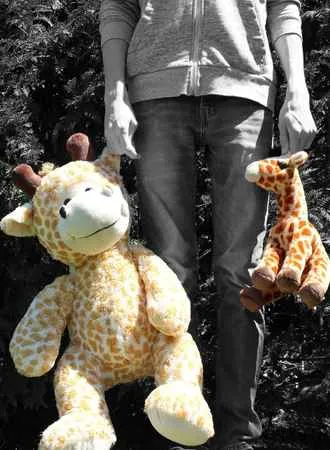
Preparation for Drying Stuffed Animals
Choosing the Right Drying Method
Before you start drying your stuffed animal, it’s important to choose the right method. The method you choose will depend on the material of the stuffed animal, as well as the amount of water it has absorbed. Here are some common ways to dry stuffed animals:
- Air Drying: This method is suitable for most stuffed animals, especially those made of natural fibers. Simply place the toy on a towel rack or something similar. You want it to have a place where the water will leak out. Don’t hang the toy, because the weight of the water can deform it. Keep it laying and you could help the water leave faster but gently squeezing the stuffie with your hands.
- Machine Drying: If your stuffed animal is machine washable, you can dry it in the dryer. However, it’s important to use a low temperature and a gentle cycle to avoid damaging the toy.
- Blow Dryer: A blow dryer can be used to dry small areas of the stuffed animal, such as the face or paws. Use a low heat setting and hold the dryer a few inches away from the toy to avoid overheating it.
Gathering the Necessary Materials
Once you’ve chosen the right drying method, it’s time to gather the necessary materials. Here’s what you’ll need:
- A clean towel or soft cloth: This will be used to remove any excess water that may be present.
- A handheld vacuum cleaner (optional): This can be used to suction out excess water.
- A bag (optional): If you’re using the machine drying method, you can place the stuffed animal in a bag to maintain control.
By choosing the right drying method and gathering the necessary materials, you’ll be well-prepared to dry your stuffed animal and restore it to its former glory.
Drying Methods for Stuffed Animals
Air Drying
The most common and gentle method for drying stuffed animals is air drying. However, depending on the stuffed animal, this may run the risk of promoting mildew growth. To avoid this, stuffed animals can be hung on a window sill or clothesline so that the sun speeds up the drying time. Placing a stuffed animal on a towel rack or a similar surface will also work, but make sure it has a place where the water can leak out. Do not hang the toy, as the weight of the water can deform it. Keep it laying and you could help the water leave faster but gently squeezing the stuffie with your hands.
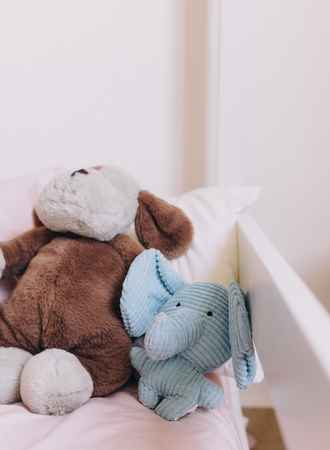
Using a Hair Dryer
If you need to dry a stuffed animal quickly, a hair dryer can be used. Set the hair dryer to the lowest heat setting and hold it at least six inches away from the surface of the stuffed animal. Move the hair dryer around the surface of the stuffed animal, making sure to dry all areas evenly. Be careful not to overheat any one spot, as this can cause damage to the toy.
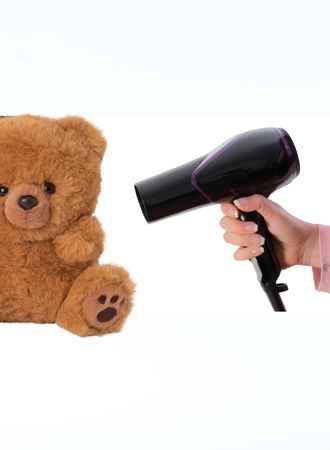
Using Rice or Silica Gel Packs
Rice or silica gel packs can be used to absorb excess moisture from a stuffed animal. Fill a sock or small cloth bag with either rice or silica gel packs and place it inside the stuffed animal. Make sure the bag is securely fastened so that the contents don’t spill out. Leave the stuffed animal in a dry, warm place for several hours or overnight. The rice or silica gel packs will absorb the moisture from the stuffed animal.
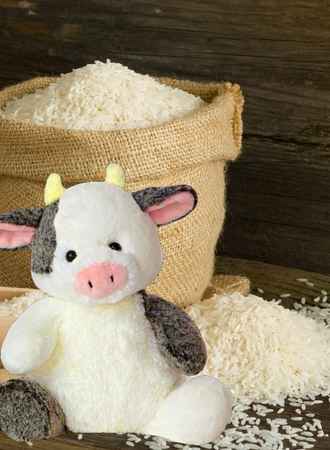
Tips and Tricks for how to dry stuffed animals after washing
Avoiding Damage to the Stuffed Animal
When drying a stuffed animal, it is important to avoid any damage that could occur from improper handling. To prevent this, avoid hanging the toy, as the weight of the water can deform it. Instead, place the toy on a towel rack or something similar, making sure that it has a place where water can leak out.
Before washing or drying, be sure to check the quality of the stuffed animal by looking at the tags. If the tag mentions glue or dyes, the stuffed animal must not be washed or placed in the dryer because the glue could melt and the colors could run.
If your stuffed animal is particularly delicate, consider placing it inside a delicate clothes mesh bag before washing or drying to prevent damage.
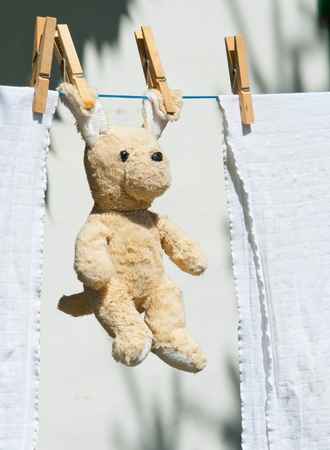
Speeding Up the Drying Process
If you need to speed up the drying process, try placing a fan or dehumidifier near the stuffed animal. Rolling the stuffed animal up in a clean, white bath towel and pressing gently down on it can also help to absorb excess water.
To help the water leave faster, gently squeeze the stuffed animal with your hands. However, be careful not to squeeze too hard or deform the toy.
Can you put stuffed animals in the dryer
Yes, many stuffed animals can be placed in the dryer, but there are precautions to take:
- Check the Label: Always read the care label on the stuffed animal first. It will provide guidance on cleaning and drying.
- Gentle Setting: If you do put a stuffed animal in the dryer, use a low-heat or no-heat setting.
- Protective Bag: Consider placing the stuffed animal in a pillowcase or mesh laundry bag. This can help protect it from direct heat and from getting snagged or pulled.
- Dryer Balls or Towels: Including a few dryer balls or a dry towel can help reduce static and speed up the drying process.
- Monitor: Don’t leave the stuffed animal in for a full cycle. Check it periodically to prevent overheating or damage.
- Air Dry: Sometimes it’s safer to partially dry the stuffed animal in the dryer and then let it air dry completely.
- Avoid Direct Heat: Never use high heat settings. The synthetic materials of some stuffed animals can melt or warp.
Remember, not all stuffed animals are dryer-safe. If in doubt, air drying is the safest method.
Dealing with Tough Stains or Odors
If your stuffed animal has tough stains or odors, consider using a cleaning solution made from 1 tablespoon of laundry detergent and distilled white vinegar for the rinse cycle. Be sure to gently squeeze the cleaning solution through the toy and then rinse by squeezing clean water through the toy with no wringing.
To remove moisture, roll the toy in a thick, clean white towel. It can then be hung to dry using clothespins or dried flat.
FAQS on how to dry a stuffed animal
How do you put plushies in the dryer?
To put plushies in the dryer, first, make sure that the toy is machine-washable. Then, place the stuffed animal in a pillowcase or a mesh laundry bag to protect it during the drying process. Set the dryer to a low heat setting and tumble dry the toy until fully dry. Be sure to remove the toy from the dryer immediately to prevent any potential damage from the heat.
How can you remove moisture from stuffed animals?
One way to remove moisture from stuffed animals is to place them in a pillowcase or a thick, dry towel and gently squeeze out any excess water. You can also use a handheld vacuum cleaner to suction out any excess water. To speed up the drying process, you can place a fan or dehumidifier near the stuffed animal.
What is a care tag for stuffed animals?
A care tag is a label attached to a stuffed animal that provides care instructions on how to properly clean and care for the toy. The care tag may indicate if the stuffed toy is okay for machine wash or if it requires surface cleaning only. It may also provide instructions on what wash cycle and temperature the toy can be washed at (cold water or hot water), what type of detergent to use, and whether the toy can be tumble dried. Machine washing plush toys is convenient.
How can you remove dust and dirt from stuffed animals?
To remove dust and dirt from stuffed animals, you can use a damp cloth or a cotton swab to gently wipe down the surface of the toy. Spot treat stains with a diluted detergent solution. Be sure to test the detergent on an inconspicuous area of the toy first to ensure that it doesn’t damage the fabric or color. Rinse the toy in cold running water.
What is the best way to care for old stuffed animals?
The best way to care for old stuffed animals is to wash and clean them gently and avoid any harsh treatments. Use a surface wash or a hand wash with cold water and a gentle detergent. Avoid putting old stuffed animals in the washing machine, as the worn fabric may not be able to withstand the agitation. Air dry the toy or tumble dry on a low heat setting to avoid damaging the toy. If the toy is particularly delicate, consider taking it to stuffed animal hospitals for professional attention.
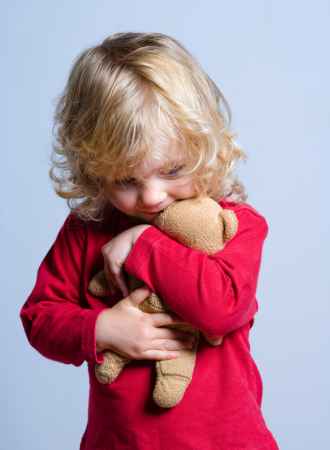
How can you remove a musty smell from stuffed animals?
To remove a musty smell from stuffed animals, sprinkle baking soda on the toy and let it sit for several hours before vacuuming it off. You can also use a damp cloth to wipe down the surface of the toy with a solution of water and mild detergent. Be sure to rinse the toy thoroughly and remove all the soap before drying. Air dry the toy to prevent any additional odors from developing.
What should you do if your stuffed animal has plastic parts?
If your stuffed animal has plastic parts, you should avoid putting it in the washing machine or dryer, as the plastic may melt or become damaged. Instead, spot clean the toy with a damp cloth and mild detergent, taking extra care to avoid getting the plastic parts wet. Air dry the toy or use a blow dryer on a low heat setting to speed up the drying process.
How can you clean stuffed toys with foam beads?
Cleaning stuffed toys with foam beads can be a bit tricky, as the beads can shift around during the washing process. It’s best to spot clean the toy with a damp cloth and mild detergent, taking extra care to avoid getting the foam beads wet. Air dry the toy or use a blow dryer on a low heat setting to speed up the drying process.

